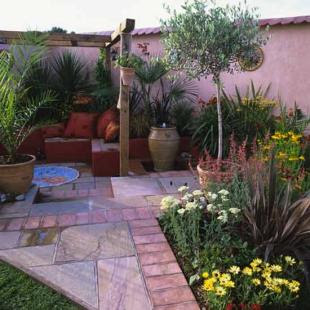TopSlide Table Saw Slides?
When it comes to Drawer Hardware, we've always felt confident that we have just about any application your can name covered - including a few that never even occurred to us. In an effort to get the most out of a less-than sprawling home shop, hobbyist woodworkers are often driven to great lengths in making their working space layout more efficient. This week’s solve-a-space-issue prize has to go to Randall Richards of Chatsworth, GA. Using a pair of our new TopSlide Heavy Duty Drawer Slides to support his trusty Craftsman table saw, he’s now able to handle large-scale ripping jobs without having to drag the heavy beast all over the shop. In his words:“I have an old Craftsman table saw that I have used for about 30 years. I always had to drag it around the shop. If I wanted to rip a full piece of plywood, I always had to have help. I designed this table to allow me to rip plywood by myself. I used the heavy duty drawer slides to allow me to slide the saw left of right. This way, the stock coming out of the saw can all slide out on the table. It works even better than I expected that it would. Now I have to devise a clamping system to hold the saw in place. I am presently using spring clamps, but I plan to add a clamp to the saw that will clamp down on the slide.”
A very clever solution, we think, and the slides fit the bill perfectly. With a 220 lb. load rating, the pair of Series 758's chosen are sure to offer decades of smooth, stable support. Randall’s is one of the first reviews we’ve received for our new TopSlide line of ball bearing and undermount drawer slides (they’ve only been out for a couple of weeks, after all). But we expect lots more. Engineered in-house by Rockler (after 50-plus years of experience with drawer hardware of all sorts) TopSlide drawer slides are designed to satisfy even stringent requirements of drawer hardware connoisseurs.
And it appears to have worked: in blind “taste tests” conducted by Rockler, customers picked TopSlide time and time-again as the smoothest operating slides among top brands. Even better, through careful design and as-careful sourcing, we’re able to offer them at a price that’s actually less than most of the premium slides you’re used to seeing. What else could you ask for? How about an unconditional lifetime guarantee? If you’re skeptical, or just think a-slide’s-a-slide’s-a-slide, we invite you to try a pair and judge for yourself - risk free. If you don’t agree that TopSlide represents a standout value, just send your purchase back for a fast and full refund.
The TopSlide line covers the full range of common and not-so-common applications. Along with the central player in the TopSlide line - the 100 lb. full extension Series 757 - you’ll find a variety of special application slides. The 757 A, for example, has handy horizontal tabs on the drawer member of the slide designed to support shelves and pullouts in perfect alignment and simplify the installation process. You’ll also find heavy-duty slides in various load ranges, over travel slides, economical 3/4 extension sides, and a premium, fully concealed undermount option in the Series CC44. We also have a second line of slides. For budget-sensitive projects, Rockler CenterLine drawer slides offer reliable service at an exceptionally wallet-friendly price.





